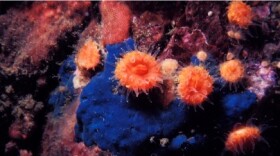It has been 25 years since the federal government passed the Pollution Prevention Act. The 1990 law is credited with reducing industrial waste by as much as 60 percent since it was enacted, by getting companies and governments to look upstream at what goes into the manufacturing process and stopping pollution at the source.
But the effectiveness of that approach appears to have limits. With many toxic chemicals remaining, especially in consumer products, additional strategies are needed. And that’s where states come in.
Looking To Washington As A Model
Washington is considered a pioneer. Ken Zarker, a section manager for pollution prevention with the State Department of Ecology, says Washington has 8 or 9 laws on the books that are looked to by experts as model legislation for the reduction of toxic chemicals.
“For example our laws, like the Children’s Safe Products Act, requires manufacturers to report the presence of these chemicals in products. This helps increase awareness and it also helps drive the market toward safer chemicals,” Zarker said.
A Broader Movement
Requiring this kind of disclosure – of whole classes of toxic chemicals – has been groundbreaking, says Ken Geiser, a national expert on policies to reduce toxic chemicals. He says just banning individual toxics, such as mercury or lead, will only get us so far.
“We should be regulating some. But it’s not going fast enough,” said Geiser, a professor emeritus of work environment at the University of Massachusetts.
Geiser has just released a new book, called "Chemicals Without Harm: Policies for a Sustainable World”. The book is a blueprint for making the transition to greener chemistry.
“We really need the market to shift. We really need safer substances to be developed and that you can’t necessarily do by regulation,” Geiser said. “That happens through a much broader movement,” he said.
In Washington, that movement is supported by a new non-profit, called Northwest Green Chemistry. Set up by the Department of Ecology, it provides technical assistance to researchers and gives out annual awards to local organizations and companies using safer substances.
This year the organization gave its Safer Chemistry Champion Award to a business called Tidal Vision, which is replacing a toxic chemical used as an odor-fighting anti-microbial in clothing with a natural substance found in crab shells and other seafood waste. It is a prime example of the kinds of strategy the state is looking for in its quest for safer chemicals.
Reinventing The Way Products Are Engineered
“At the end of the day, our manufacturers are the ones who are going to be able to help drive green chemistry and innovation,” said Zarker.
The hope is that by growing the field though institutions such as Northwest Green Chemistry, a new generation of chemists will reinvent the way many products are engineered, from the ground up.
With Washington’s track record as a hub for innovation, the potential is there for a new industry of bio-based chemicals to grow up alongside related sectors, such as the one emerging for biofuels.
“What we’re talking about is all the basic materials and chemicals that we use and love every day that go into our clothes, our cars, our airplanes,” Zarker said. “It’s really fundamental, important work."







